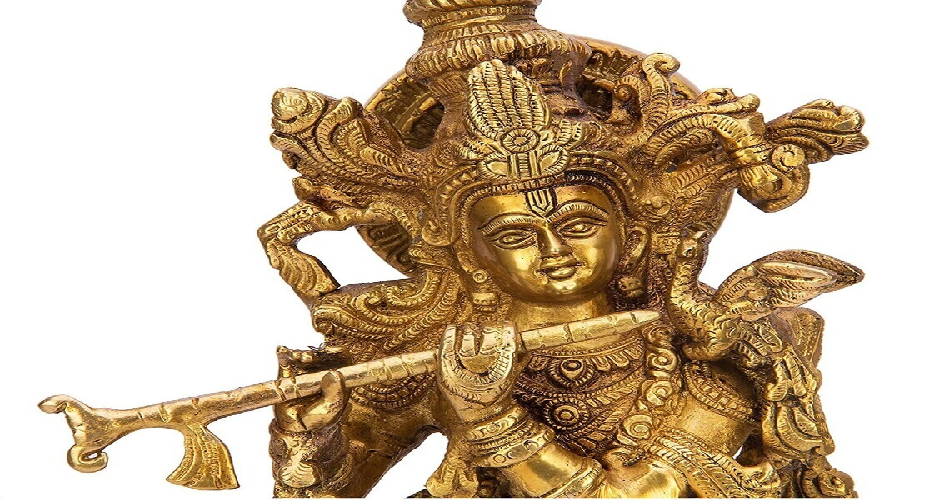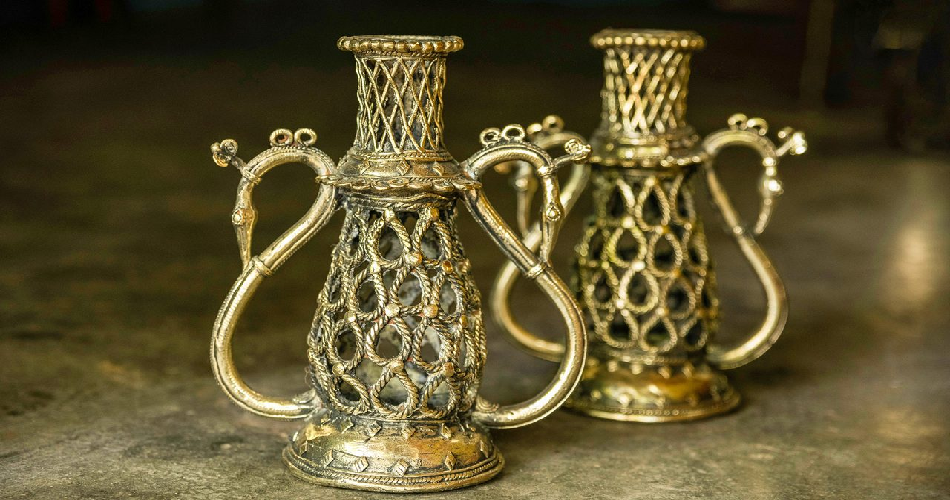
Dwarka, one of the most sacred cities of India and a key part of the Char Dham pilgrimage, offers not only spiritual bliss but also a wide range of beautiful souvenirs that reflect its divine aura, coastal charm, and Gujarati craftsmanship.
Below are the top 10 souvenirs every visitor should explore — complete with what they are, why they’re special, and how to choose them wisely.
1. Brass Idols and Statues of Lord Krishna
What it is:
Miniature or medium-sized brass idols of Lord Krishna (especially in his Dwarkadhish form) and other Hindu deities.
Why it’s special:
Dwarka is known as the kingdom of Lord Krishna, making brass idols a sacred and culturally significant souvenir.
Buying tips:
- Purchase from trusted shops around Dwarkadhish Temple Market.
- Check for smooth finish and detailed craftsmanship.
- Ensure it’s solid brass, not hollow or lightweight imitation.
Care instructions:
Polish occasionally using a soft cloth and brass cleaner. Keep away from humidity.
2. Conch Shells (Shankh) and Sea-Shell Handicrafts
What it is:
Natural conch shells and decorative handicrafts made from sea-shells such as bowls, wall hangings, and showpieces.
Why it’s special:
Dwarka’s coastal setting and association with Lord Krishna’s conch (Panchajanya) make these items spiritually symbolic and beautiful.
Buying tips:
- Buy from coastal markets or souvenir stalls near the temple.
- Choose polished and cleaned shells.
- Avoid overly delicate pieces if you’re traveling long distances.
Care instructions:
Dust gently and avoid soaking in water. Keep dry to maintain shine.
3. Dvaravati Shila (Chakra Shila) Stones
What it is:
Sacred stones believed to have chakra-like markings, associated with Lord Vishnu and Dwarka’s mythology.
Why it’s special:
Found in and around the Dwarka region, these stones hold deep spiritual importance for devotees of Krishna and Vishnu.
Buying tips:
- Buy only from authentic religious shops.
- Handle with care as these stones can be fragile.
- Learn their significance before purchase — many consider them for worship, not decor.
Care instructions:
Keep in a clean, elevated place if used for spiritual purposes.
4. Patola Silk Sarees and Dress Materials
What it is:
Traditional Gujarati silk sarees featuring intricate double-ikat weaving patterns, along with vibrant dress fabrics.
Why it’s special:
Though Patola weaving originates in Kutch and Patan, Dwarka’s markets sell excellent regional silk and handloom variants.
Buying tips:
- Ask for genuine Patola silk certification if available.
- Check fabric texture and design clarity.
- Avoid synthetic imitations sold at low prices.
Care instructions:
Dry-clean only and store in breathable cotton covers.
5. Embroidered Footwear (Juttis) and Mirror-Work Textiles
What it is:
Colorful handcrafted shoes, purses, and fabrics adorned with traditional embroidery and tiny mirrors.
Why it’s special:
Mirror-work embroidery is a hallmark of Gujarati culture, representing local artistry and vibrant village life.
Buying tips:
- Ensure the embroidery threads are tight and mirrors firmly attached.
- Try footwear for comfort before purchasing.
- Negotiate prices in local markets.
Care instructions:
Store in dry areas and clean gently with a soft brush or cloth.
6. Ethnic Jewellery (Silver and Beadwork)
What it is:
Traditional jewellery made from silver, oxidized metal, and beads — including bangles, earrings, necklaces, and anklets.
Why it’s special:
Gujarat’s heritage of tribal and folk jewellery is visible in Dwarka’s local markets, offering affordable and elegant designs.
Buying tips:
- Check for material authenticity (silver or silver-plated).
- Ensure clasps and hooks are secure.
- Avoid overpriced items in tourist-heavy stalls.
Care instructions:
Clean silver jewellery with mild polish; keep bead ornaments away from moisture.
7. Wall Hangings and Folk Art
What it is:
Colorful wall hangings, tapestries, and embroidered panels depicting peacocks, elephants, or Krishna motifs.
Why it’s special:
These artworks represent Gujarat’s folk culture and make beautiful décor for homes or offices.
Buying tips:
- Choose lightweight pieces for easy travel.
- Confirm stitching and hanging loops are strong.
- Compare prices between stalls for the best deal.
Care instructions:
Dust regularly and avoid direct sunlight to prevent color fading.
8. Local Spices and Gujarati Snacks
What it is:
Packaged dry snacks like khakhra, masala peanuts, bhakhri, and spice blends used in Gujarati cuisine.
Why it’s special:
Dwarka’s markets sell fresh and flavorful snacks that showcase Gujarat’s rich culinary tradition.
Buying tips:
- Check packaging dates and seals for freshness.
- Buy smaller portions if you’re experimenting.
- Try items before buying, if sampling is allowed.
Care instructions:
Store airtight and keep away from moisture and sunlight.
9. Traditional Dresses – Ghagra-Choli and Dress Materials
What it is:
Brightly embroidered women’s garments, often embellished with mirrors, sequins, and beadwork.
Why it’s special:
Reflecting Gujarat’s festive culture, these dresses showcase regional craftsmanship and make for perfect festive or souvenir attire.
Buying tips:
- Check stitching and fabric strength.
- For unstitched material, ask for fabric care instructions.
- Negotiate prices in small boutiques or open markets.
Care instructions:
Dry-clean only; fold carefully to protect embroidery and mirror-work.

10. Brassware and Decorative Metal Items
What it is:
Beautifully crafted diyas (oil lamps), puja thalis, and decorative utensils made from brass, copper, or kansa (bell metal).
Why it’s special:
Metalwork is a traditional art form in Gujarat, and Dwarka’s artisans offer intricate designs for both religious and decorative use.
Buying tips:
- Examine the finish — it should be smooth and well-polished.
- Avoid lightweight fakes made from aluminum.
- Consider size and weight for packing convenience.
Care instructions:
Polish occasionally and store in a dry place to prevent tarnish.
Additional Shopping Tips for Visitors
- Best Shopping Areas: Explore markets near Dwarkadhish Temple, Bhadkeshwar Market, and local handicraft stalls.
- Bargaining: Most street vendors expect polite negotiation; branded stores have fixed rates.
- Timing: Visit markets in the morning or early evening to avoid temple rush hours.
- Authenticity: Ask for receipts or authenticity certificates for silk and silver items.
- Packing: Request bubble-wrap or cloth packaging for fragile or metal souvenirs.